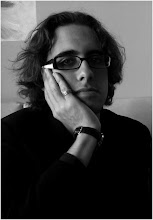When asked by an American student to explain Hamletmachine, Heiner Müller responded, “If I know what I want to say, I say it. I don’t have to write it.” This sphinx-like refusal to either accept or give a definitive meaning or explanation is at the heart of Hamletmachine, both as a text and in performance. With this production, we, like Müller, have moved beyond the need for answers and solutions. No singular meaning can be given as explanation. What is of use here is conflict.
Rather than tell a story, this production places importance on formal structure, like a work of visual art, to create a landscape of the betrayed revolution and explore the place of theatre as a site of revolutionary change and critical discourse. At this junction, between cruelty and dialectics, the theatre moves beyond drama. The difference between drama (from the Ancient Greek to do) and theatre (literally a place to see) is defined.
There is no plot. The linear narrative of psychological realism is defied. The reality/cliché of the everyday is made strange in order to be seen anew onstage. The slice of life is replaced by the trauma of existence. No attempt at a representative/mimetic copy of the outside world is made. The stage creates its own reality.
The question then is asked – without a unified plot or coherent characters, what is the spectator’s relationship to this complex performance of collage, of colliding, contradictory fragments? The spectator’s task is to unravel the intertwined layers of theatrical elements: gesture, speech, stillness, lighting, projection, set, costume, music, etc. How do these elements work together? When do they work against one another? In the words of Marlene Dietrich, when does the face say something different than the voice?
Müller once stated that, “I don’t think that a play can be good unless you burn all your intentions during the writing process.” And in the process of staging/resisting Müller, the act of directing is akin to the authorship of playwriting. The creation of meaning rests in the minds of the spectator. The demand on the audience is to make its own meaning, independent upon, yet inevitably informed by our decisions during rehearsals, reordering the explosion of images, allusions, and associations created in performance.
Rather than tell a story, this production places importance on formal structure, like a work of visual art, to create a landscape of the betrayed revolution and explore the place of theatre as a site of revolutionary change and critical discourse. At this junction, between cruelty and dialectics, the theatre moves beyond drama. The difference between drama (from the Ancient Greek to do) and theatre (literally a place to see) is defined.
There is no plot. The linear narrative of psychological realism is defied. The reality/cliché of the everyday is made strange in order to be seen anew onstage. The slice of life is replaced by the trauma of existence. No attempt at a representative/mimetic copy of the outside world is made. The stage creates its own reality.
The question then is asked – without a unified plot or coherent characters, what is the spectator’s relationship to this complex performance of collage, of colliding, contradictory fragments? The spectator’s task is to unravel the intertwined layers of theatrical elements: gesture, speech, stillness, lighting, projection, set, costume, music, etc. How do these elements work together? When do they work against one another? In the words of Marlene Dietrich, when does the face say something different than the voice?
Müller once stated that, “I don’t think that a play can be good unless you burn all your intentions during the writing process.” And in the process of staging/resisting Müller, the act of directing is akin to the authorship of playwriting. The creation of meaning rests in the minds of the spectator. The demand on the audience is to make its own meaning, independent upon, yet inevitably informed by our decisions during rehearsals, reordering the explosion of images, allusions, and associations created in performance.



